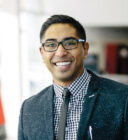
The opportunity today is that Canadian borders do not bind you, and you don’t have to only go to your local dental school. Prospective dental students today can pick from domestic and accredited international programs and return to Canada to practise dentistry. But this poses new and costly concerns of a financial nature whereby they must return home with the same wages as their domestic counterparts but with a far greater debt load due to higher tuition costs, sometimes an extra year in the program, and high living expenses.
So, in today’s environment of interest rates eclipsing 7%, how do you justify attending such a costly program and returning with the same financial goals and timelines? Something’s gotta give. Graduating dental students will regularly lease a new luxury vehicle and not realize the financial impact that that has for years to come. What’s the impact of a $700 payment at graduation for a new car versus a $700 additional debt repayment? It might differ between getting into a nice new home or becoming debt free five years sooner.
The other consideration is that dental school is a multiyear commitment. Interest rates at the beginning of your dental program may differ from what they are at the end. They could be higher or lower. Additionally, new grads must consider regional job markets, dental fee guides, taxes, and professional corporations. These are common questions that recent grads (domestic and international) are not asking and, therefore, are not being advised about, impacting their financial wellness to start their career.
This document was prepared solely as a general guide and is not intended to provide or replace professional, legal or tax advice. For your own specific situation, please consult your own financial, tax and legal advisors.
It’s been ten long years of school and sacrifice to finally reach her goal of becoming a dentist. And Jennifer, a recent grad from the University of Sydney – School of Dentistry, is finally returning to Toronto, Ontario, to start her career.
Jennifer chose the route less travelled and attended an accredited international dental program in Australia – still fully accredited in Canada, but from halfway around the world. After four years down under, she returns home with an opportunity to work in the dental industry, but also with financial uncertainty.
Let’s peek at Jennifer’s story… Of her financial path out of an Accredited International Dental school and how she can become a successful Modern Dentist.
Jennifer’s Financial Picture
Jennifer, 29, has no spouse or children.
Goals: Pay down student debt as quickly as possible. Buy her first home. Start accumulating wealth.
Estimated monthly after-tax income: $10,250.
Assets: None.
Liabilities: Federal/Provincial debt of $100,000 and Bank issued student line of credit of $300,000. Prime +/-.
Monthly outlays:
Rent $2,500; water, sewer, garbage $75; tenant’s insurance $75; electricity $100; heating $125; vehicle leases $700; car insurance $200; other auto $410; groceries $800; clothing $200; vacations, travel $1,000; additional discretionary $200; dining, drinks, entertainment $725; personal care $100; club memberships $200; other individual $200; insurance $450; communications $300.
Total: $8,360
❱ A surplus of $1,890 goes to her $400,000 of debt and occasional big-ticket expenses.
The Plan: Focus on reducing expenses and paying down debt; continue living like a student. Realize that today’s interest rate is so high that the surplus will not cover the interest cost. Start allocating a small monthly amount towards buying a home, possibly with tax-advantaged tools.
The Payoff: Become debt-free (quicker). This plan will reduce stress and focus the strategy on wealth accumulation.
Most students will graduate without a plan. They won’t know what their income is, they don’t know what income taxes are, and they won’t know how to reach their goals of becoming debt free or even buying that house. It takes a huge amount of determination and perseverance to generate a six-figure income and not spend the whole paycheck.
For some graduating dentists, this may be their first job (ever). So, the reality of going from $0 to >$10,000 a month of income is really a shock to the system. Taking the time to analyze and review where your money goes is always a good step. Simple is best: spend less than you earn.
As part of this series, we will continue to look at new dentists’ financial pictures and provide insight into how to become a successful Modern Dentist.
If you would like to be featured or highlighted as part of this series, please contact Renn Financial Group Inc. jfernando@renn.ca or 403-999-2341
About the Authors


Richard Lochhead and Joshua Fernando leverage their experience and expertise to offer real opinions, practical explanations and unmatched service on financial strategies concerning Canadian dentists. Richard is a portfolio manager, car enthusiast and soccer fanatic. Joshua is an insurance expert and a former Canadian reality TV show contestant. Together they make up Renn Financial Group, a Canadian-based independent brokerage specializing in insurance, tax, and wealth.

